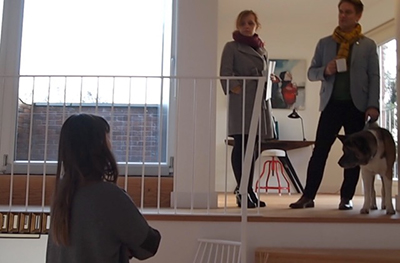 People in a modern townhouse
Housing matters to everyone but to different people in different ways. There is no one housing solution that will universally fit everyone, in every location, equally, as if we inhabit some utopian idyll, where generic housing can just be rolled out across a city plan.
People in a modern townhouse
Housing matters to everyone but to different people in different ways. There is no one housing solution that will universally fit everyone, in every location, equally, as if we inhabit some utopian idyll, where generic housing can just be rolled out across a city plan.
But in the rush to build more homes in the UK isn’t this just what is happening? Is there an alternative, another way of making the houses we want to live in, to suit the ways we live in cities now?
The houses that volume builders construct are openly criticised by home owners for many reasons, including, building housing with garages that are too small for cars and making them from materials that do not age well, or lack the same aesthetic appeal as older properties (Clancy 2001).
The control that a few volume house builders have over the supply of new housing is often blamed, not only for regulating the rate at which homes are supplied but also the design quality of the housing that is built.
The house-building market wasn’t always structured like this. In the mid-twentieth century there was greater competition and more independent house builders. What has noticeably been lost in the decline of local house building is diversity in the designs of the houses that are built.
Refreshingly, there is an alternative view. It is from seeing potential in liberating the unused ‘gap’ spaces in cities and questioning the ways we eat/live/work and actually inhabit homes that Roger Zogolovich of Solidspace provocatively suggests ‘Shouldn’t we all be developers?’ In this he promotes the design of housing that values the experience of inhabiting a home that has been designed well, for the place where it is, to fit within the existing urban fabric.
The dwellings that Solidspace design are a twenty-first-century re-working of the London townhouse typology that has proven to be flexible to changes in city life over time. Solidspace’s typology is a split-level design that uses the volume within a dwelling to create a greater sense of space, light and character. Solidspace do pose a design challenge to policy makers and the house-building infrastructure, asking ‘Don’t we all deserve to live in well-designed housing’?

Rate and Review
Rate this article
Review this article
Log into OpenLearn to leave reviews and join in the conversation.
Article reviews